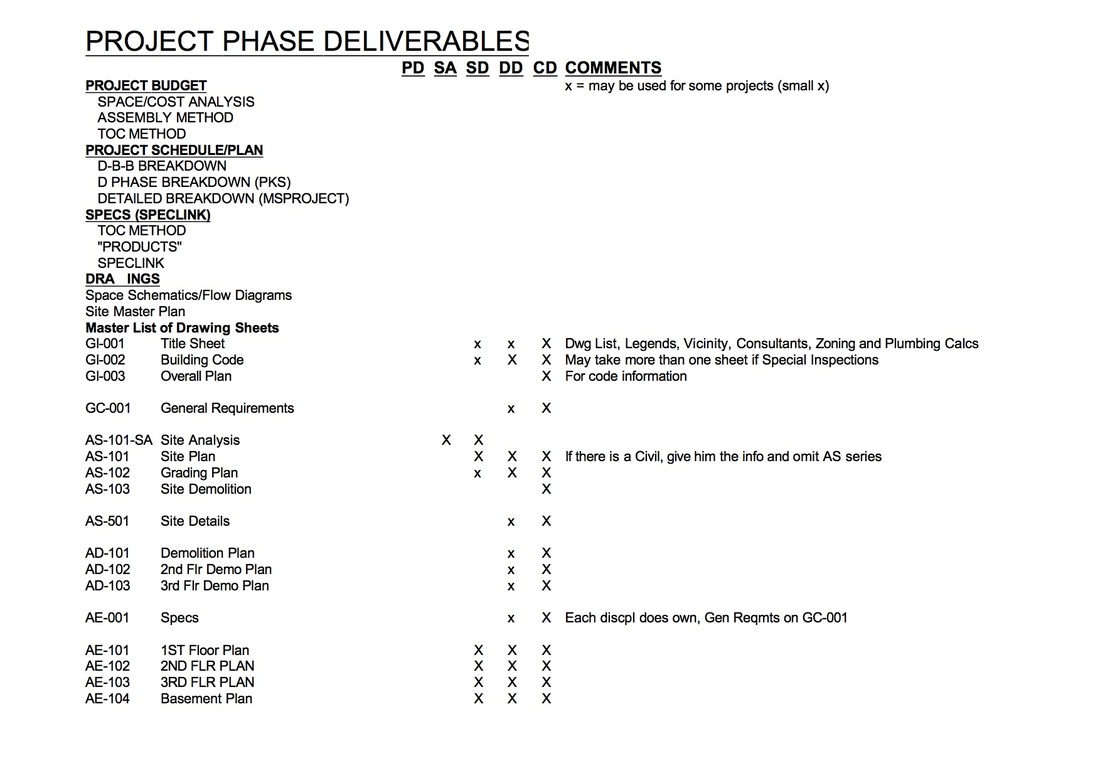|
The master deliverables checklist and its many uses.  The Phase Deliverables Checklist is a tool that I used to estimate fees, plan the work and manage the design process. The master deliverables checklist is a list of all the drawing sheets that we routinely had on a largish project (for us) arranged by design phases. The downloadable checklist, partially visible below, uses a loose adherence to the National CAD Standards. You may use a different sheet naming convention but the idea is the same. The first steps during either estimating a fee or planning the design work is to copy the checklist, rename it, and edit the list for the anticipated scope of work. This is mostly striking off unneeded sheets, but also adding sheets that are needed for this project. Next is to check off which sheets will be needed for each phase; see the columns headed with the phase initials. Use the COMMENTS column to make any observations about the sheet content or research that will be needed. Use to estimate fees
If your projects are similar and you collect time-spent data on each type of sheet, you would soon be able to estimate a fee using this form as a checklist with historical average cost per sheet embedded for calculations. If your work is more varied, reviewing the list will help you estimate the hours you will need to produce the deliverables. The master list often spurs questions regarding scope of work. Get questions resolved early before you find yourself expected to provide services that you haven't budgeted for. Use to plan work and set priorities When getting started on a project you can use the checklist to assign staff. Two ways of doing this are to replace the 'Xs' with the individual's initials to make the assignment. Or add columns to hold the initials. Color coding the assignment cells helps to focus attention on responsibilities and to make workloads obvious. To set priorities you can make the entire row bold to stress what is most important. Use to manage work As the project progresses, you can update the assignments and plan subsequent phases. With the addition of another column you can track an estimated percent completion for each sheet. Add a formula to calculate the average completion. This isn't terribly accurate but it is at least a somewhat objective evaluation of where your progress stands. Use the model to create your own version based on your project types and typical scope of work. Add other tasks such as Code Review, Cost Estimates, Scheduling, and Specifications to suit your standards. Add engineering disciplines if you normally manage their work too. BOTTOM LINE: You have probably used something similar to manage projects. What I am suggesting is that a spreadsheet offers several advantages.
The larger the project, the more valuable this tool is for managing the work. Comments are closed.
|
x
Archives
February 2024
Categories
All
|
Architekwiki | Architect's Resource | Greater Cincinnati
© 2012-2022 Architekwiki
© 2012-2022 Architekwiki









